Megalosaurus bucklandii Mantell, 1827
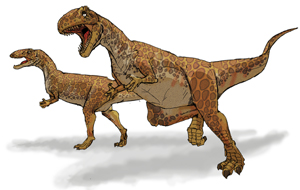
Phylum: Chordata Haeckel, 1874
Subphylum: Vertebrata Cuvier, 1812
Classe: Dinosauria Owen, 1841
Ordine: Saurischia Seeley, 1887
Famiglia: Megalosauridae Huxley, 1869
Genere: Megalosaurus Buckland, 1824
Descrizione
Il Megalosaurus è stato il primo dinosauro descritto scientificamente, da William Buckland, nel 1824. Il megalosauro era uno dei maggiori predatori del Giurassico superiore europeo. Le prime ricostruzioni lo mostravano simile a un gigantesco coccodrillo, e solo in seguito, grazie alla scoperta di resti completi di altri dinosauri simili (come l'Allosauro), si è capito che questo carnivoro fosse un attivissimo bipede. Megalosaurus vuol dire grande rettile, misurava dai 7 ai 9 m di lunghezza. Nonostante la sua larga fama, il megalosauro è conosciuto solo per pochi resti fossili, comprendenti ossa della mascella e della mandibola, denti, vertebre e ossa delle zampe, provenienti dall'Inghilterra e dalla Francia. Gran parte dei denti fossili ritrovati in tutti i piani geologici del mesozoico a tutte le latitudini e ascritti nel corso degli ultimi due secoli al genere Megalosaurus, in realtà non sono resti diagnosticabili e pertanto ricadono nel marasma dei nomina dubia. Oltre a ciò, moltissimi dinosauri carnivori ora ben noti sono stati inizialmente descritti come specie appartenenti al genere Megalosaurus. Si pensi solo a Carcharodontosaurus, Eustreptospondylus, Dilophosaurus e Proceratosaurus. Attualmente il megalosauro è ritenuto essere una forma piuttosto primitiva di quel gruppo di dinosauri carnivori, detti Tetanuri, tra i quali si trovano anche gli antenati degli uccelli. I suoi parenti più stretti sono il nordamericano Torvosaurus e gli strani Spinosauri, carnivori cretacei cacciatori di pesce muniti di una vela dorsale.
Diffusione
145 milioni di anni fa, nel Giurassico superiore, in Inghilterra e Francia.
Sinonimi
= Megalosaurus bucklandi Meyer, 1832 = Megalosaurus conybeari Ritgen, 1826 (Nomen oblitum) = Scrotum humanum Brookes, 1763 (nomen oblitum).
Bibliografia
–Babcock, Loren E. (18 March 2024). "Nomenclatural history of Megalonyx Jefferson, 1799 (Mammalia, Xenarthra, Pilosa, Megalonychidae)". ZooKeys (1195): 297-308.
–Lhuyd, E. (1699). - 1328. Plectronites belemnitam referens compressior, ab utroque latere excoriatus. E fodinis Stunsfeldiensibus. (pg. 66).
–Lhuyd, E. (1699). Lithophylacii Britannici Ichnographia, sive lapidium aliorumque fossilium Britannicorum singulari figura insignium. Gleditsch and Weidmann:London.
–Delair, J.B., and Sarjeant, W.A.S. (2002). The earliest discoveries of dinosaurs: the records re-examined[permanent dead link]. Proceedings of the Geologists' Association 113:185-197.
–Gunther, R.T. (1945). Early Science in Oxford: Life and Letters of Edward Lhuyd, volume 14. Author:Oxford.
–Plot, R. (1677). "The Natural History of Oxford-shire, Being an Essay Toward the Natural History of England". Mr. S. Miller's: 142.
–Weishampel, David B.; White, Nadine (2003). "Humble beginnings". The Dinosaur Papers: 1676–1906. Washington, D. C.: Smithsonian Institution Press. p. 2.
–"Robert Plot: A brief biography of this important geologists life and work" (PDF). Oxford University Museum of Natural History. p. 4.
–Sarjeant, William A. S. (1997). "The earliest discoveries". In Farlow, James O.; Brett-Surman, Michael K. (eds.). The Complete Dinosaur. Bloomington: Indiana University Press. pp. 3-11.
–Brookes, R. (1763). "A New and Accurate System of Natural History: The Natural History of Waters, Earths, Stones, Fossils, and Minerals with their Virtues, Properties and Medicinal Uses, to which is added, the Method in which Linnaeus has treated these subjects". J. Newberry. 5: 364.
–Rieppel, Olivier (20 July 2021). "The first ever described dinosaur bone fragment in Robinet's philosophy of nature (1768)". Historical Biology. 34 (5): 940-946.
–Halstead, L. B. (1970). "Scrotum humanum Brookes 1763 – the first named dinosaur". Journal of Insignificant Research. 5: 14-15.
–Halstead, L. B.; Sarjeant, W. A. S. (1993). "Scrotum humanum Brookes – the earliest name for a dinosaur". Modern Geology. 18: 221-224.
–Gunther, R. T. (1925). "Early Science in Oxford". Isis. 8 (2): 375-377.
–Benson, R. B. J. (2009). "An assessment of variability in theropod dinosaur remains from the Bathonian (Middle Jurassic) of Stonesfield and New Park Quarry, UK and taxonomic implications for Megalosaurus bucklandii and Iliosuchus incognitus". Palaeontology. 52 (4): 857-877.
–Parkinson, J. (1822). "Outlines of Oryctology. An introduction to the study of fossil organic remains, especially those found in the British Strata". M.A. Nattali: 305.
–Glut, D. F. (2013). Dinosaurs: The Encyclopedia 1. McFarland & Company, Incorporated Publishers.
–Buckland, W. (1824). "Notice on the Megalosaurus or great Fossil Lizard of Stonesfield". Transactions of the Geological Society of London. 2. 1 (2): 390-396.
–Allain, R. (2001). "Redescription de Streptospondylus altdorfensis, le dinosaure théropode de Cuvier, du Jurassique de Normandie" (PDF). Geodiversitas. 23 (3): 349-367.
–Molnar, R.E.; Seriozha M.K. & Dong Z. (1990). "Carnosauria" In: Weishampel, D. B.; Dodson, P.; Osmolska, H., eds. (2007). The Dinosauria. Berkeley: University of California Press. pp. 169-209.
–von Ritgen, F. A. (1826). "Versuchte Herstellung einiger Becken urweltlichter Thiere". Nova Acta Academiae Caesareae Leopoldino-Carolinae Germanicae Naturae Curiosorum. 13: 331-358.
–Mantell, G. (1827). Illustrations of the geology of Sussex: a general view of the geological relations of the southeastern part of England, with figures and descriptions of the fossils of Tilgate Forest. London: Fellow of the Royal College of Surgeons. p. 92.
–Meyer, C. E. H. (1832). Palaeologica zur Geschichte der Erde. Frankfurt am Main: Verlag von Siegmund Schmerber. p. 110.
–Buckland, W. (1836). "Geology and Mineralogy considered with reference to Natural Theology". W. Pickering: 180-183.
–Owen, R. (1842). "Report on British fossil reptiles, part II". Report of the British Association for the Advancement of Science. 11: 32-37.
–Naish, D.; Martill, D. M. (2007). "Dinosaurs of Great Britain and the role of the Geological Society of London in their discovery: basal Dinosauria and Saurischia". Journal of the Geological Society of London. 164 (3): 493-510.
–Oshevsky, G. (1997). "Becklespinax". Cleveland Museum of Natural History. Retrieved 15 September 2013.
–Glendening, J. (2013). Science and Religion in Neo-Victorian Novels: Eye of the Ichthyosaur. Routledge. pp. 39-40. "Dinosaur Mounts on display" (PDF). Oxford University Museum of Natural History. Archived from the original (PDF) on 13 January 2021.
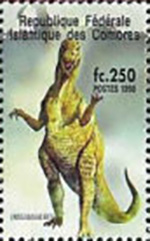
|
Data: 01/01/1998
Emissione: Animali preistorici Stato: Federal and Islamic Republic of Comoros Nota: Emesso in un foglio di 9 v. diversi |
|---|
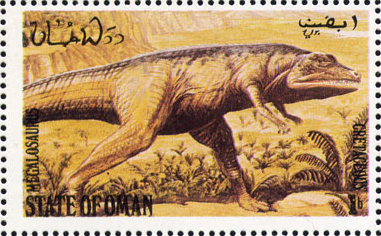
|
Data: 01/01/1975
Emissione: Animali preistorici Stato: Oman Nota: Emesso in un foglietto di 8 v. diversi |
|---|
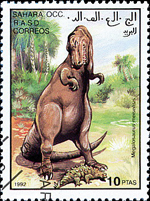
|
Data: 23/04/1992
Emissione: Animali preistorici Stato: Spanish Sahara |
|---|
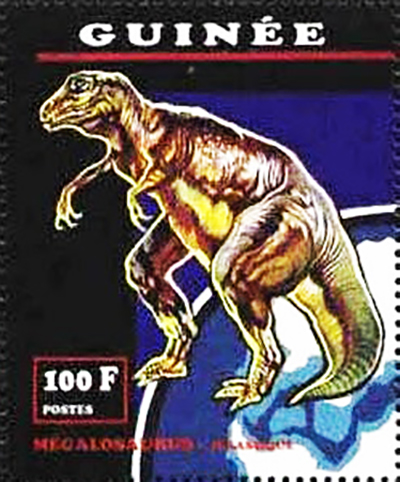
|
Data: 27/10/1993
Emissione: Dinosauri Stato: Guinea |
|---|
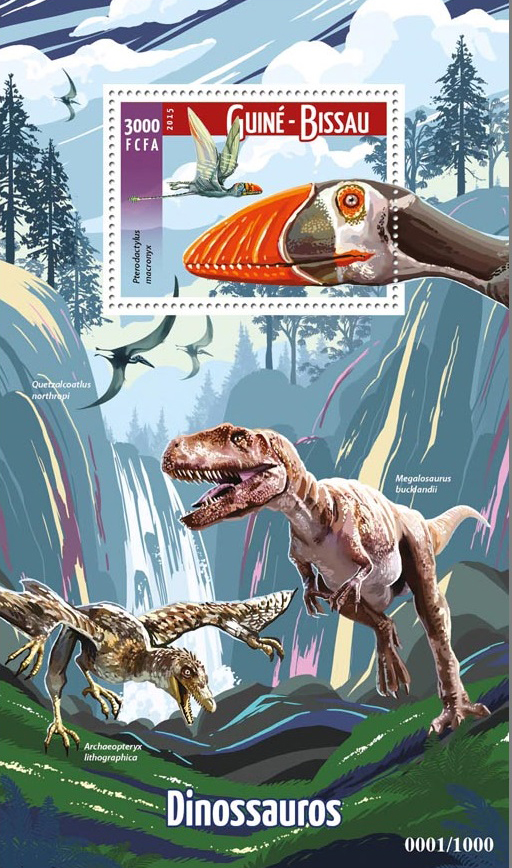
|
Data: 26/10/2015
Emissione: Dinosauri e animali preistorici acquatici Stato: Guinea-Bissau Nota: Presente nel foglietto |
|---|
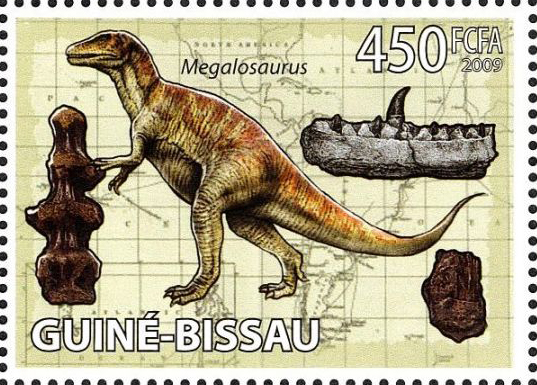
|
Data: 10/04/2009
Emissione: Charles Darwin (1809-1882) Stato: Guinea-Bissau Nota: Emesso in un foglietto di 5 v. diversi in una serie di 7 v. |
|---|
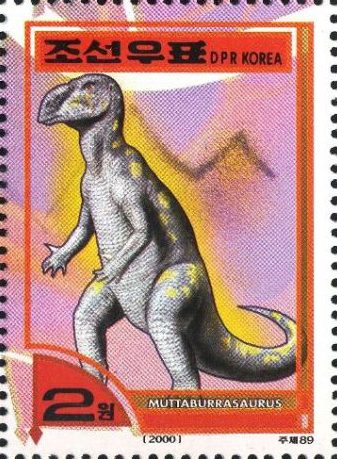
|
Data: 10/02/2000
Emissione: Dinosauri Stato: Korea (North) Nota: Emesso in un foglietto di 4 v. diversi |
|---|
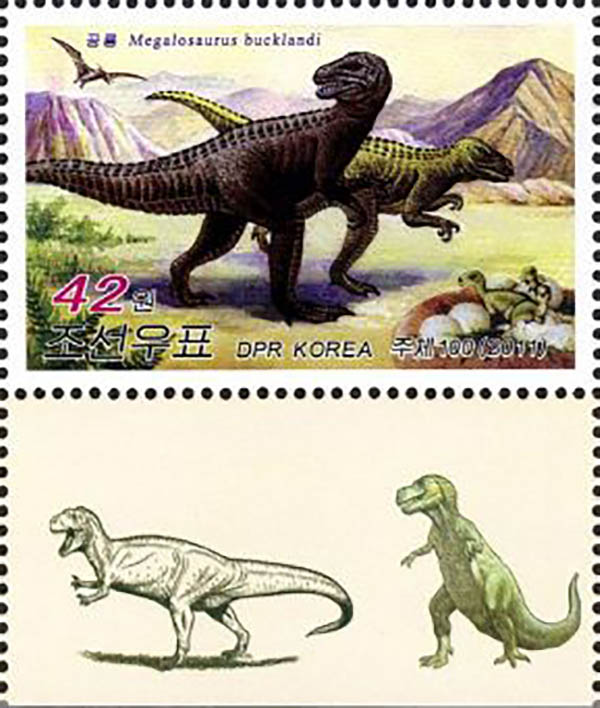
|
Data: 05/09/2011
Emissione: Dinosauri Stato: Korea (North) Nota: Emesso in un foglietto di 2 serie in striscia |
|---|
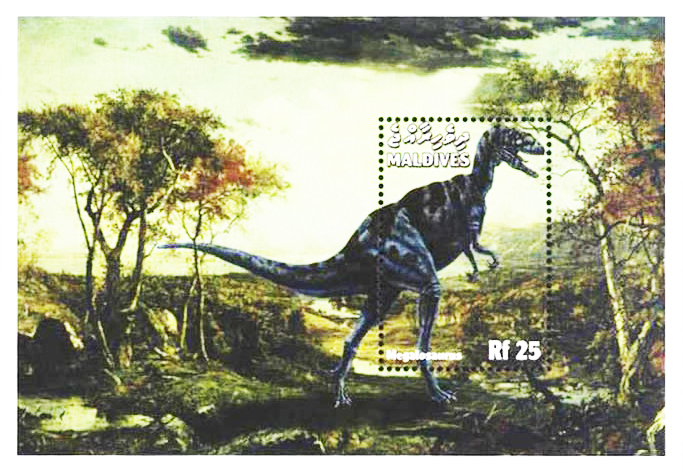
|
Data: 22/06/1999
Emissione: Animali preistorici Stato: Maldives |
|---|
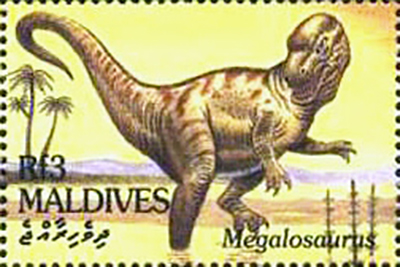
|
Data: 20/06/1994
Emissione: L'età dei dinosauri Stato: Maldives Nota: Emesso in un foglietto di 12 v. diversi |
|---|
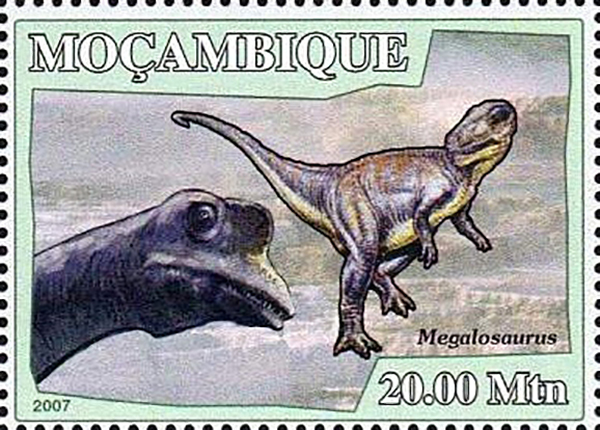
|
Data: 10/12/2007
Emissione: Dinosauri Stato: Mozambique |
|---|

|
Data: 30/04/1994
Emissione: Dinosauri Stato: Romania |
|---|
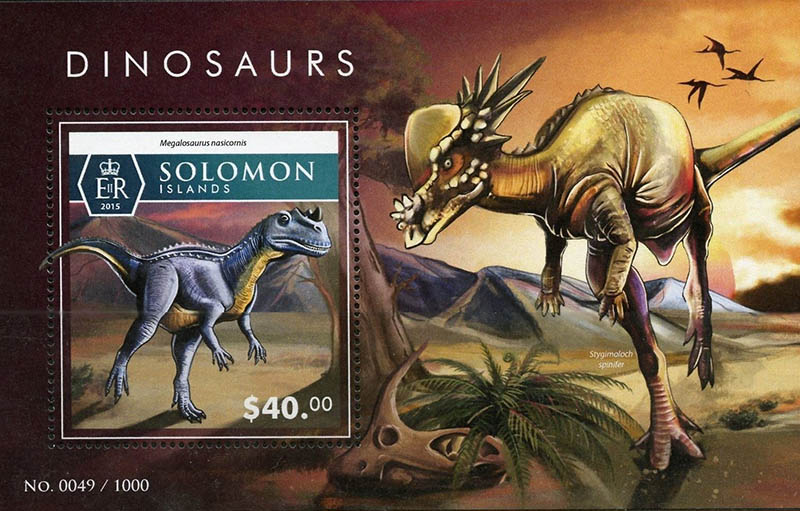
|
Data: 30/11/2015
Emissione: Dinosauri Stato: Solomon Islands |
|---|
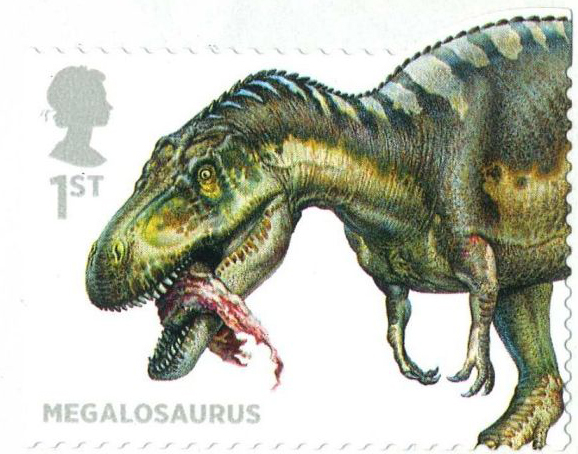
|
Data: 10/10/2010
Emissione: Dinosauri Stato: United Kingdom |
|---|
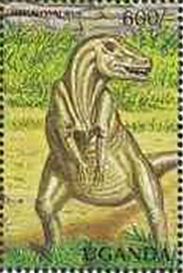
|
Data: 24/03/1998
Emissione: Animali preistorici Stato: Uganda Nota: Serie emessa in foglietto |
|---|
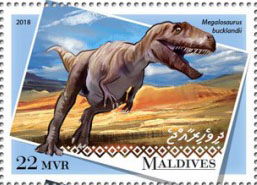
|
Data: 08/08/2018
Emissione: Animali preistorici Stato: Maldives Nota: Emesso in un foglietto di 4 v. diversi |
|---|
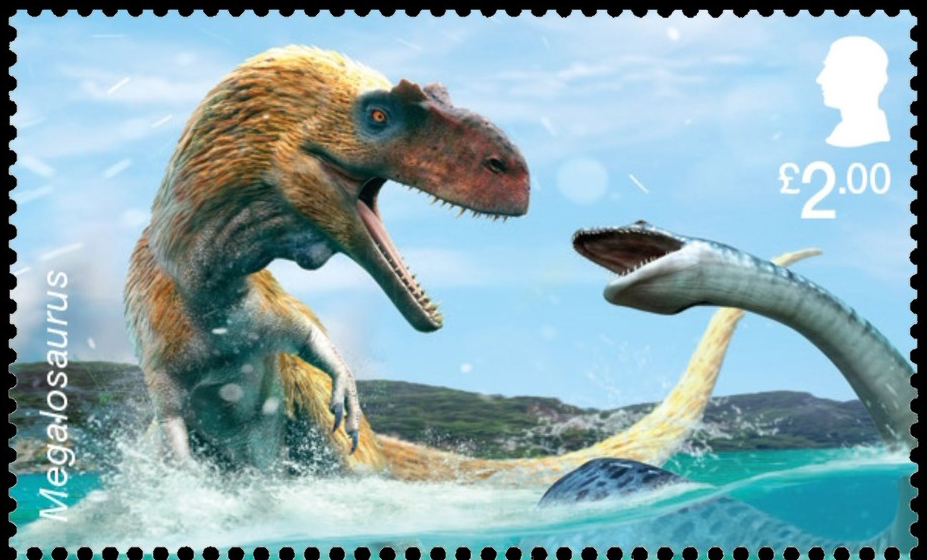
|
Data: 12/03/2024
Emissione: L'Era dei dinosauri Stato: United Kingdom Nota: Emesso in se-tenant |
|---|